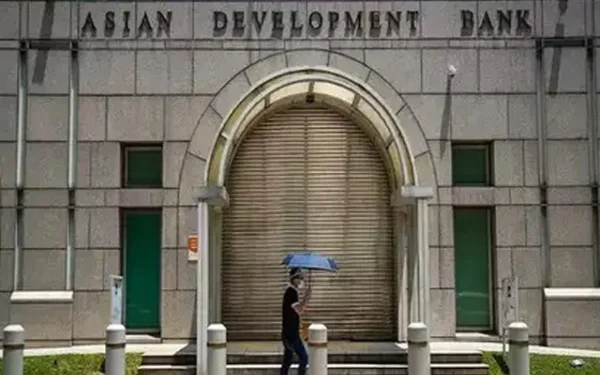Overview of the 58th Annual Meeting of the Asian Development Bank (ADB)
Milan, Italy – The 58th Annual Meeting of the Board of Governors of the Asian Development Bank (ADB) took place in Milan, drawing attention from global economic leaders amid rising financial uncertainties and geopolitical tensions. The high-profile event saw participation from key stakeholders across Asia and the Pacific, with discussions focused on boosting resilience, fostering inclusive growth, and responding to the impacts of climate change and global debt challenges.
During the meeting, Pakistan made a direct and urgent appeal to the ADB, seeking enhanced financial and technical assistance to navigate its ongoing economic crisis. Represented by Dr. Kazim Niaz, Secretary of the Ministry of Economic Affairs, Pakistan emphasized the need for institutional support to bolster the country’s fragile economy.
Pakistan’s Appeal for Economic Assistance
Economic Challenges Facing Pakistan
Addressing ADB member states, Dr. Kazim Niaz painted a sobering picture of Pakistan’s economic struggles. He outlined several key challenges confronting the country, including:
- Mounting debt burden due to repeated borrowing and low foreign exchange reserves.
- Climate vulnerability, with Pakistan being among the top 10 countries most affected by climate-related disasters.
- Limited fiscal space to implement meaningful reforms or provide relief to a struggling population.
These issues, he explained, are hampering Pakistan’s ability to meet its development goals and sustain economic growth. Dr. Niaz appealed to the ADB to play a more proactive role in supporting Pakistan through soft loans, grants, and technical partnerships that can help rebuild infrastructure, improve public services, and tackle climate change challenges.
Emphasis on Transparency and Institutional Integrity
Dr. Niaz also emphasized Pakistan’s commitment to institutional integrity and governance reforms. He assured the ADB that all assistance would be utilized transparently to ensure effective delivery of aid. The focus, he said, was not just on financial inflow, but on building sustainable systems to prevent economic shocks in the future.
His remarks echoed Pakistan’s broader reform narrative in recent years, where the government has pledged to curb corruption, digitalize financial systems, and increase transparency in public procurement and development projects.
ADB’s Response and Regional Strategy
ADB’s Increased Lending Capacity
In his keynote address, ADB President Masato Kanda, who was delivering his first official speech in the role, acknowledged the economic hardships being faced by many member countries, including Pakistan. Kanda announced a significant policy shift: the ADB will increase its lending capacity by $100 billion over the next decade, a move designed to assist member nations in tackling growing financial pressures, climate change, and post-pandemic recovery.
Kanda emphasized the importance of inclusive and sustainable growth, noting that Asia-Pacific economies must enhance resilience to shocks, both environmental and financial. He reaffirmed the ADB’s support for climate financing, disaster risk management, digital transformation, and policy-based loans tailored to the needs of developing nations.
Tensions Between the U.S. and China Highlight Geopolitical Divisions
A notable subplot during the meeting was the geopolitical friction between the United States and China, two of the largest stakeholders in the ADB. The U.S. representative criticized the ADB’s continued lending to China, arguing that the world’s second-largest economy no longer qualifies as a developing country and should not receive concessional financing.
However, China pushed back strongly, reiterating its stance that it remains the world’s largest developing country. The Chinese delegation underscored its pivotal role as both a recipient and contributor to the ADB’s mission, and highlighted its collaboration with developing nations across Asia and Africa through projects focused on infrastructure development, trade facilitation, and poverty alleviation.
Observers noted that this public disagreement reflected broader tensions between the U.S. and China, especially as both nations vie for influence in multilateral development institutions like the ADB.
India Showcases Reform Achievements and Pushes for Efficiency
India’s Digital Transformation and Reform Success
Another highlight of the meeting was the address by Indian Finance Minister Nirmala Sitharaman, who detailed India’s reform journey under the ADB’s support. She credited the Digital India program with transforming service delivery in critical sectors such as:
- Education: Digital platforms are now expanding access to learning across rural and urban areas.
- Healthcare: Telemedicine and health portals have improved access to medical advice and public health awareness.
- Financial inclusion: India has seen a significant rise in digital transactions and bank account ownership, especially among marginalized communities.
Sitharaman pointed out that these reforms had positioned India as a leader in inclusive digital innovation, setting an example for other developing economies.
Advocacy for Reduced Processing Times
The Indian delegation also raised concerns about the bureaucratic hurdles in securing ADB financing. Sitharaman called for streamlined processing timelines and simplified approval mechanisms to ensure that developing countries can access funds more quickly during crises. She stressed that time-sensitive development assistance can mean the difference between economic stability and collapse in countries facing financial or environmental emergencies.
Leadership Transition and Strategic Outlook
During the meeting, Uzbekistan was elected as the Chairman of the ADB Board of Governors for 2025–2026, marking a shift in leadership that reflects growing regional representation and the Central Asian country’s rising influence in multilateral forums.
ADB President Masato Kanda reiterated the bank’s commitment to collaborative development and emphasized the need for continued engagement with low-income and climate-vulnerable countries. He announced that the ADB would continue focusing on five key areas:
- Climate resilience and green development
- Digital connectivity and innovation
- Strengthened social protection
- Gender equality
- Regional cooperation and integration
Pakistan’s Way Forward: Strategic Collaboration with ADB
For Pakistan, the ADB remains one of the most crucial development partners. Over the past two decades, ADB has funded numerous projects in Pakistan spanning energy, transportation, water resources, education, and health. As Pakistan now grapples with high inflation, currency devaluation, and debt repayment pressures, enhanced ADB assistance could offer a lifeline.
Experts believe that Pakistan must now back its financial requests with demonstrable reforms. This includes increasing tax revenues, curbing subsidies, and pursuing sustainable development practices aligned with ADB’s strategic priorities.
Opportunities Through CPEC and Regional Integration
Pakistan can also leverage the China-Pakistan Economic Corridor (CPEC), a flagship project under China’s Belt and Road Initiative (BRI), to align its infrastructure investments with ADB-supported regional integration plans. Enhanced connectivity with Central Asia, the Middle East, and East Asia could help Pakistan overcome its economic isolation and attract more investment.
Conclusion: A Pivotal Moment for Economic Cooperation
The 58th ADB Annual Meeting was more than a diplomatic gathering—it was a clear reflection of the urgency for international collaboration in a world facing multiple crises. For Pakistan, the meeting provided a platform to voice its challenges and call for solidarity from development partners.
With the ADB announcing a $100 billion lending boost, and with global focus on resilience and reform, Pakistan now has a critical opportunity to secure aid, implement transformative reforms, and chart a path to long-term economic recovery.

























